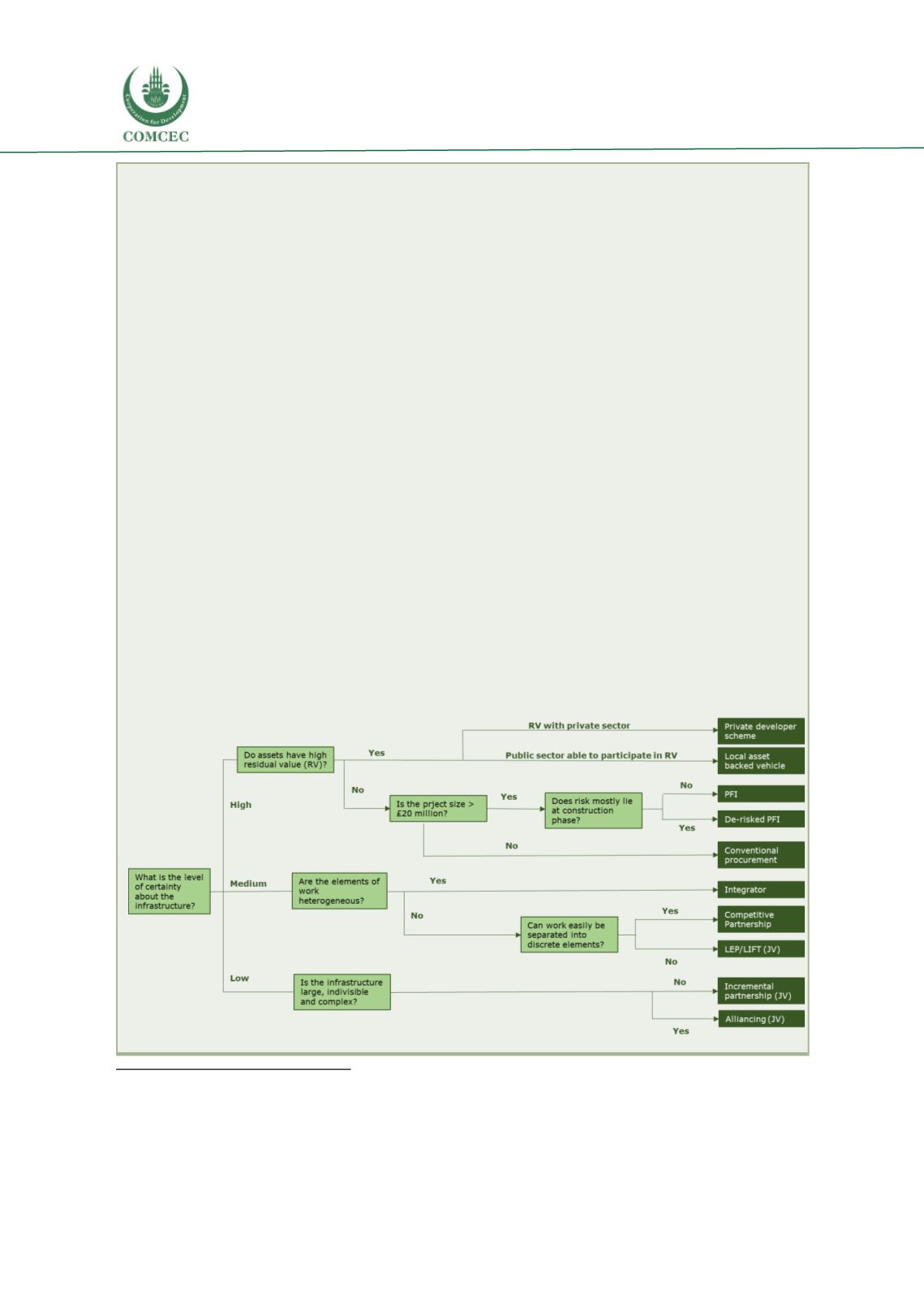

Risk Management in Transport PPP Projects
In the Islamic Countries
66
Box 2 The United Kingdom Treasury decision process (2014)
19
The decision tree below illustrates how
the decision process on adopting a PPP model should
be supported by an upstream strategic analysis of the portfolio of candidate investment
schemes
, which will then determine the type of PPP approach best suited to assist project
delivery and more likely to mitigate risks. The procedure outlined below is not specific to the
transport sector and reflects a mature and sophisticated PPP market like the one in the United
Kingdom. The diagram below shows how the features of the investments under consideration
affect the decision about the way to involve the private sector in the delivery of public assets and
services. The right-hand side of the diagram shows how the traditional procurement route is in
fact one of the various options, while the overall uncertainty related to the investment being
considered is a key step in the decision process and affects the preferred model for private
involvement. The conventional PPP model in the United Kingdom is driven through the approach
inaugurated by the Private Finance Initiative (PFI) of the early 90’s. More specifically, the
revenue-generating potential of the investment – this is presented as “net residual value” in the
diagram – is an important determinant of the route to follow, as it can give the public sector scope
to share revenues with the private party, including the option of full privatization. Another
relevant dimension in decision-making relates to whether the infrastructure is made by
heterogeneous components. If this is the case this may lead to structure the cooperation with the
private sector involving an “integrator” intermediary entity (in case the components cannot be
implemented separately) or – where the planned investment can be decomposed in discrete
components - with multiple partnerships or local Joint Ventures.
20
Finally, for large and complex
infrastructure a less structured, multi-phased joint venture approach can be considered a more
convenient than the more traditional PFI route.
19
This Box relies on the presentation in Crawford J. (2014) “Infrastructure & Risk: Identification, Management
& Transfer of Risk by HM Treasury”, Cambridge Judge Business School. The figure is drawn from Prior, N.
(2008) “Building Flexibility. New delivery models for Public Infrastructure projects”, Deloitte Research United
Kingdom.
















